Abstract
Purpose
This paper suggests the use of distraction dynamic external fixators (DDEF) for the treatment of proximal middle phalanx fractures.
Materials and Methods
Seven patients, who were diagnosed with comminuted intraarticular fractures at the base of the middle phalanx from February 2014 to November 2016, were enrolled in this study (volar aspect 6 cases, dorsal aspect 1 case). They underwent a closed reduction under a C-arm image intensifier, and DDEF was applied with general anesthesia. Range of motion (ROM) exercise was encouraged after 3 to 5 days postoperatively, and DDEF was removed after 5 weeks. Subluxation, angulation and displacement were evaluated 6 weeks postoperatively.
Go to : 
References
1. Zemel NP, Stark HH. Problem fractures and dislocations of the hand. Instr Course Lect. 37:235–249. 1988.
2. Lee JY, Teoh LC. Dorsal fracture dislocations of the proximal interphalangeal joint treated by open reduction and interfragmentary screw fixation: indications, approaches, and results. J Hand Surg Br. 31:138–146. 2006.

3. McElfresh BC, Dobyns JH, O'Brien ET. Management of fracture-dislocations of the proximal interphalangeal joints by extension-block splinting. J Bone Joint Surg Am. 54:1705–1711. 1972.
4. Suzuki Y, Matsunaga T, Sato S, Yokoi T. The pins and rubbers traction system for treatment of comminuted intraarticular fractures and fracture-dislocations in the hand. J Hand Surg Br. 19:98–107. 1994.

5. Ruland RT, Hogan CJ, Cannon DL, Slade JF. Use of dynamic distraction external fixation for unstable fracture-dislocation of the proximal interphalangeal Joint. J Hand Surg Am. 33:19–25. 2007.
6. Mansha M, Miranda S. Early results of a simple distraction dynamic external fixator in management of comminuted intraarticular fractures of base of middle phalanx. J Hand Microsurg. 5:63–67. 2013.

7. Schenck RR. Dynamic traction and early passive movement for fractures of the proximal interphalangeal joint. J Hand Surg Am. 11:850–858. 1986.

8. Agee JM. Unstable fracture dislocations of the proximal interphalangeal joint. Treatment with the force couple splint. Clin Orthop Relat Res. 214:101–112. 1987.
9. Fahmy NR, Harvey RA. The “S” quattro in the management of fractures in the hand. J Hand Surg Br. 17:321–331. 1992.

10. Hamilton SC, Stern PJ, Fassler PR, Kiefhaber TR. Mini-screw fixation for the treatment of proximal interphalangeal joint dorsal fracture-dislocations. J Hand Surg Am. 8:1349–1354. 2006.

11. Salter RB. The physiologic basis of continuous passive motion for articular cartilage healing and regeneration. Hand Clin. 10:211–219. 1994.

12. Johnson D, Tiernan E, Richards AM, Cole RP. Dynamic external fixation for complex intraarticular phalangeal fractures. J Hand Surg Br. 29:76–81. 2004.

Go to : 
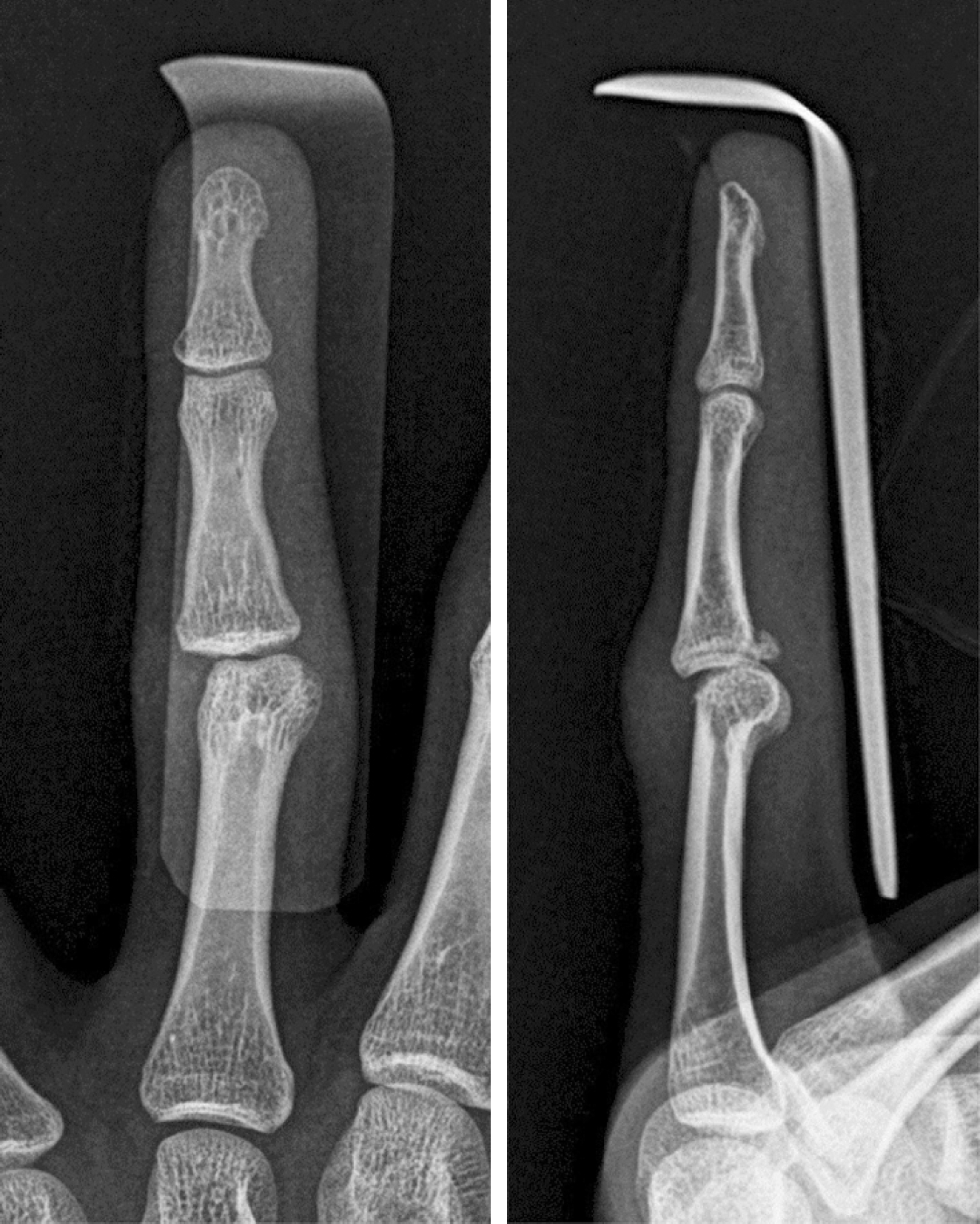 | Fig. 1.Close-up X-ray image of the subluxation of proximal interphalangeal joint and suspected injury to the ulnar collateral ligament. |
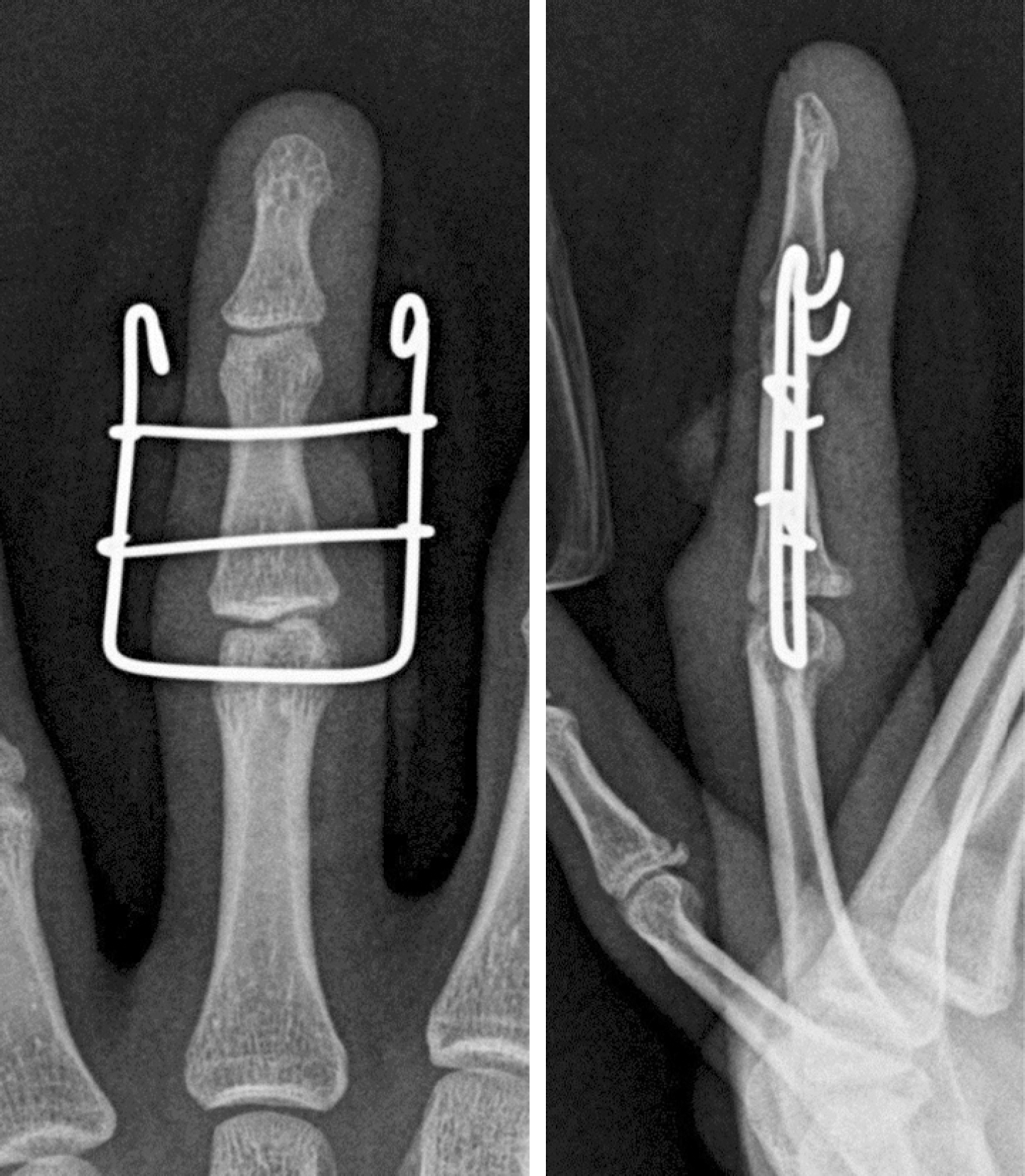 | Fig. 2.Close-up X-ray image of distraction dynamic external fixator applied to subluxation of the proximal interphalangeal joint. |
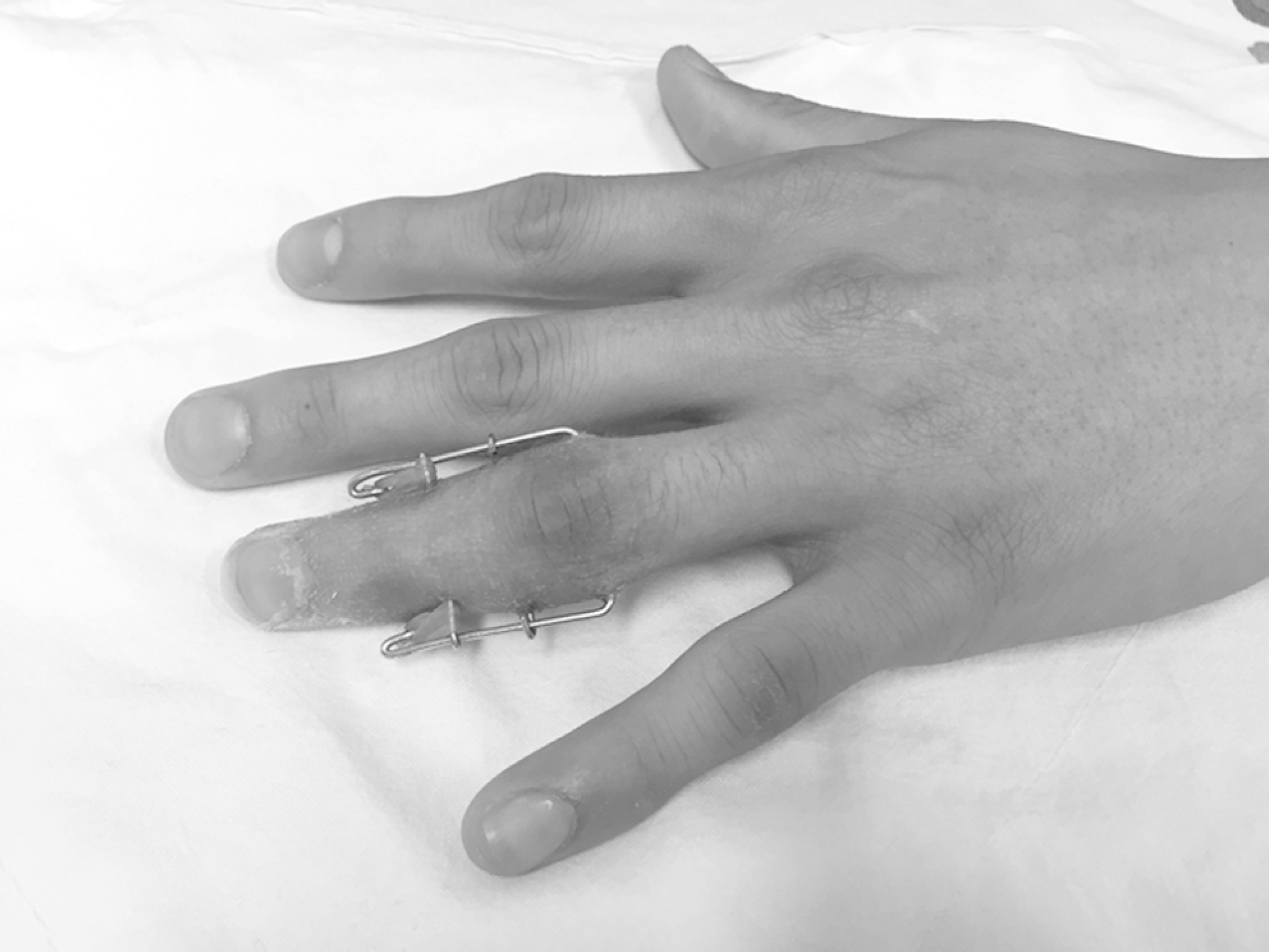 | Fig. 3.Medical photograph of a patient who applied distraction dynamic external fixator at 3 days after operation. |
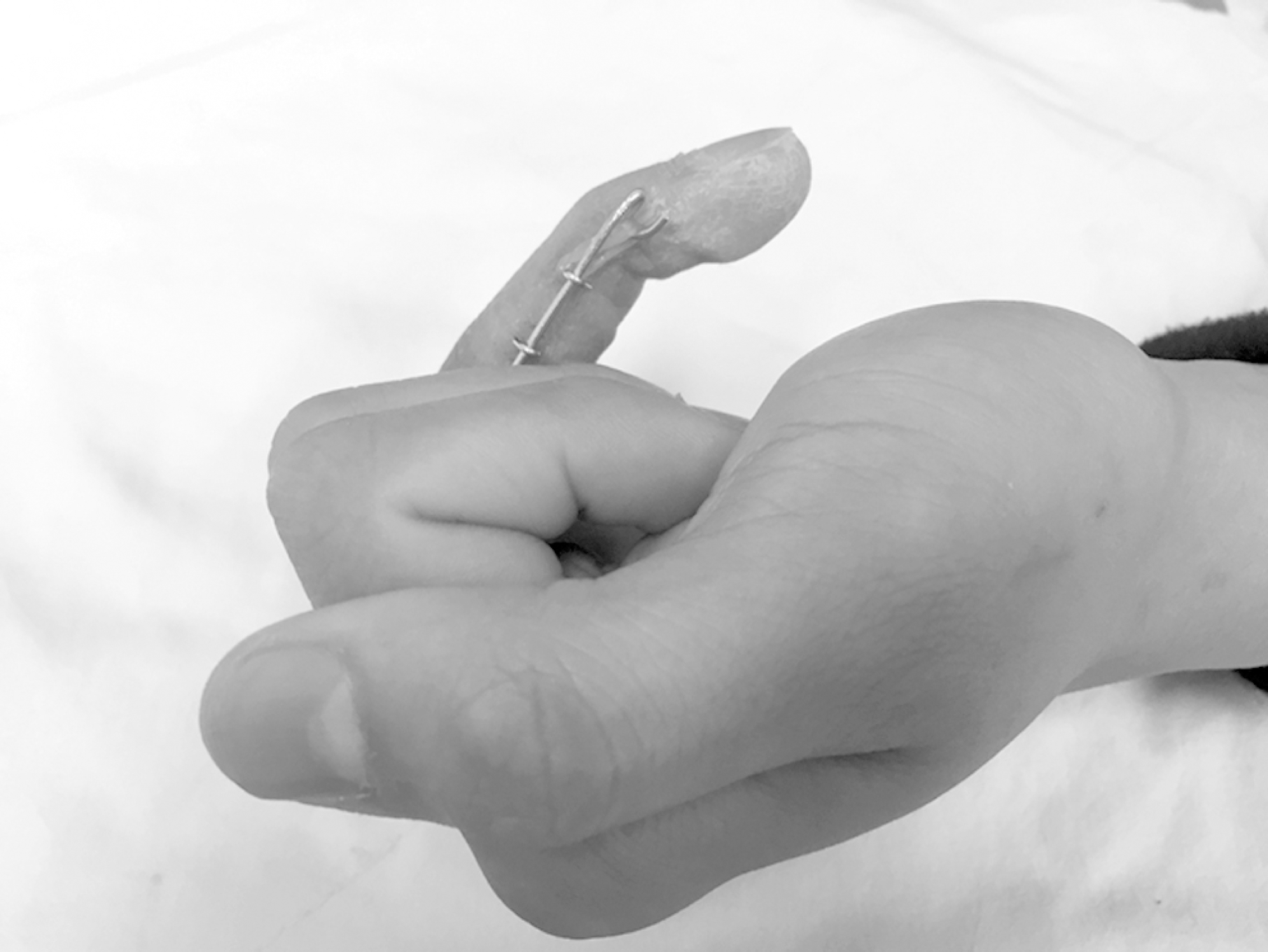 | Fig. 4.Medical photograph of a patient who applied distraction dynamic external fixator. Range of motion exercise was encouraged 3 to 5 days after surgery. |
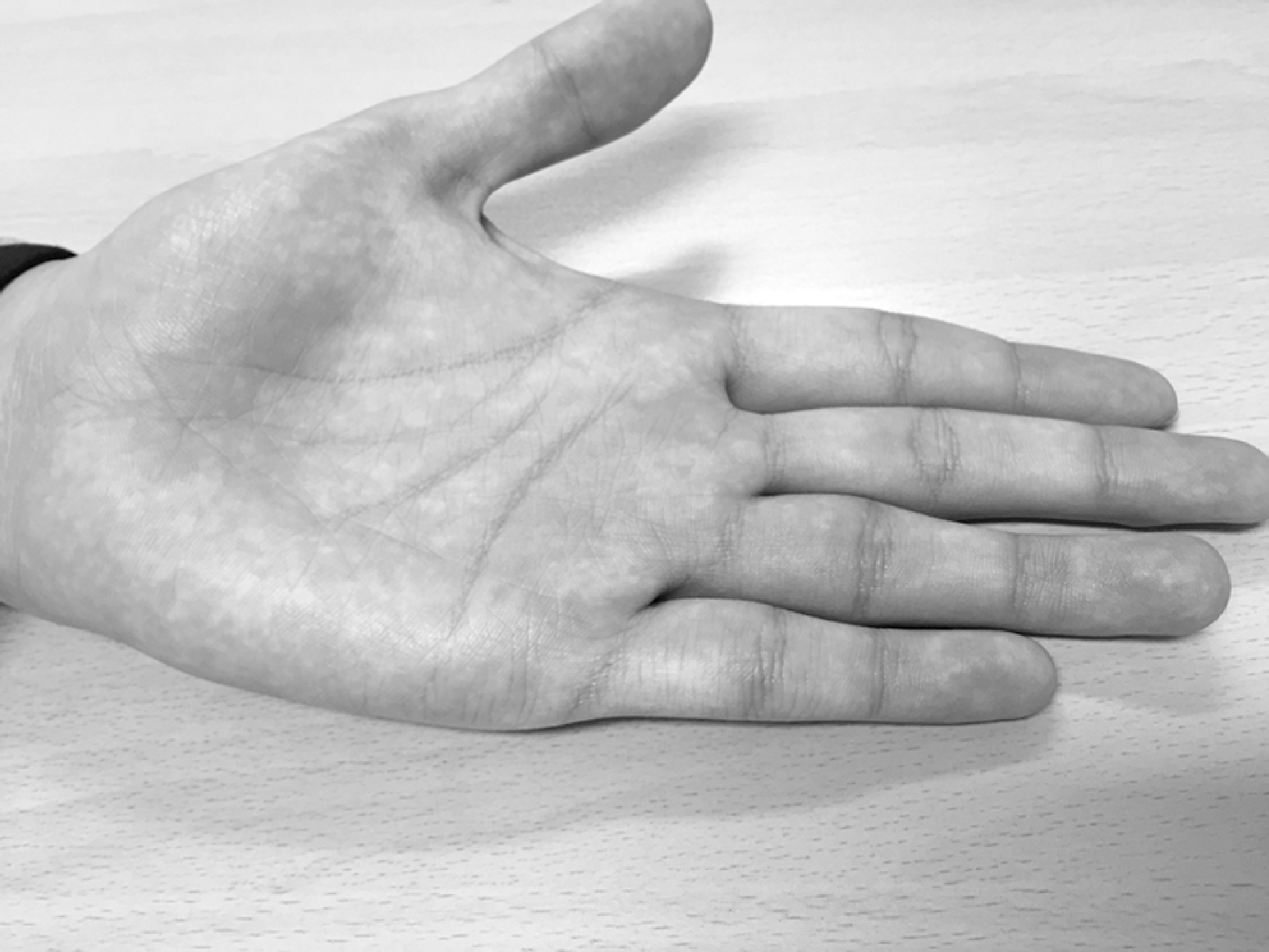 | Fig. 5.Medical photograph of a patient applied distraction dynamic external fixator at 5 weeks after operation. |
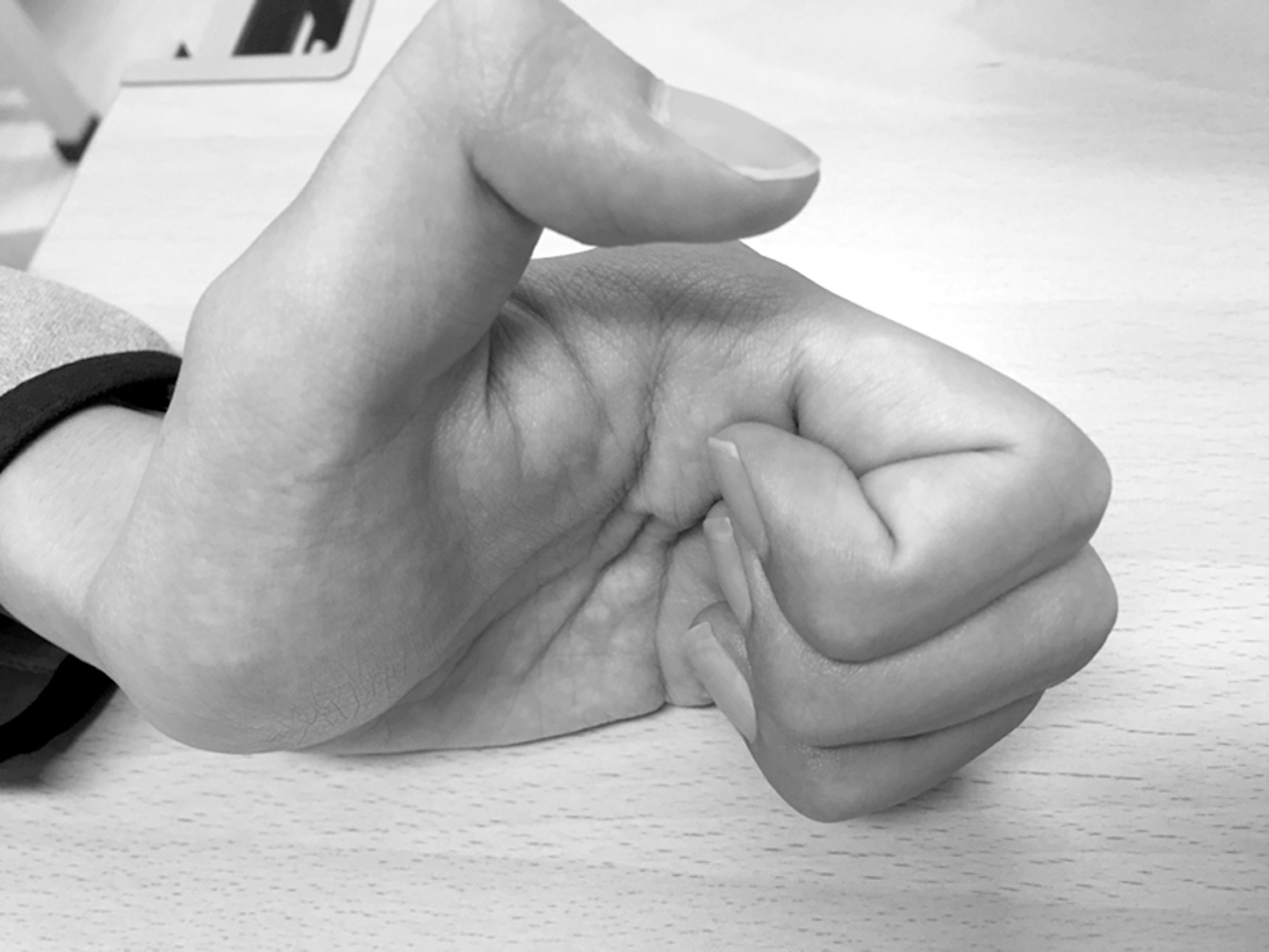 | Fig. 6.Medical photograph of a patient applied distraction dynamic external fixator. The external fixator was removed after 5 weeks. |
Table 1.
Demographics and Summary of the Results




 PDF
PDF ePub
ePub Citation
Citation Print
Print


 XML Download
XML Download